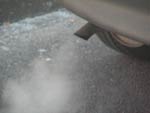


Free nanoparticles are formed through either the breaking down of larger particles or by controlled assembly processes.
Natural phenomena and many human industrial and domestic activities, such as cooking, manufacturing or road and air transport release nanoparticles into the atmosphere.
In recent years, nanoparticles intentionally engineered for advanced technologies and consumer products have become a new source of exposure. At present it is not clear just how significantly human exposure to these engineered nanoparticles has increased, be it in the workplace, or through the use of nanotechnology-based products.
There are two approaches for the manufacturing of nanomaterials:
Man-made nanoparticles engineered to have the desired size, chemical composition, and surface and charge properties can be produced in the liquid phase mainly through controlled chemical reactions. It is also possible to control conditions at which individual atoms and molecules assemble themselves into the required structure.
Naturally occurring processes that generate nanoparticles in the liquid phase include erosion and chemical disintegration of organic materials (such as plant or microorganism debris) or geological materials (such as clay). More...
The main route of bottom-up formation of nanoparticles in the gas phase is by a chemical reaction whereby gases are converted into tiny liquid droplets, followed by condensation and growth. Such reactions that generate nanoparticles occur naturally in the atmosphere, in volcanic plumes, and in human activities such as cooking, welding or smelting, and polymer manufacture.
Recently, this type of formation of nanoparticles in the gas phase has become an important pathway for the industrial production of nanoparticle powders of metals, oxides, semiconductors, polymers and various forms of carbon, which may be in the form of spheres, wires, needles, tubes, or other shapes.
The top-down formation of nanoparticles through disintegration of larger particles is severely limited in the gas phase since nanoparticles tend to stick to each other very strongly. More...
In ambient air, the number of nanoparticles can be surprisingly similar in urban and rural areas, with as much as one million to one hundred million nanoparticles per litre of air depending on conditions.
In rural areas, nanoparticles are the product of chemical reactions involving compounds emitted by living organisms or by human activities such as wood burning.

In urban areas, the primary sources of nanoparticles are diesel engines or cars with defective or cold catalytic converters. Particularly, high-speed road traffic produces high numbers of nanoparticles of very small size.
In some workplaces, airborne nanoparticles may represent a potential health risk. It is unlikely that nanoparticles would be released during manufacture because processes that generate them are often performed in closed chambers. Instead, exposure to nanoparticles is more likely to happen after the manufacturing process itself, or as a result of leaks arising from improper sealing. It is important to bear in mind that smaller nanoparticles remain airborne for longer periods of time than larger particles. More...

This summary is free and ad-free, as is all of our content. You can help us remain free and independant as well as to develop new ways to communicate science by becoming a Patron!